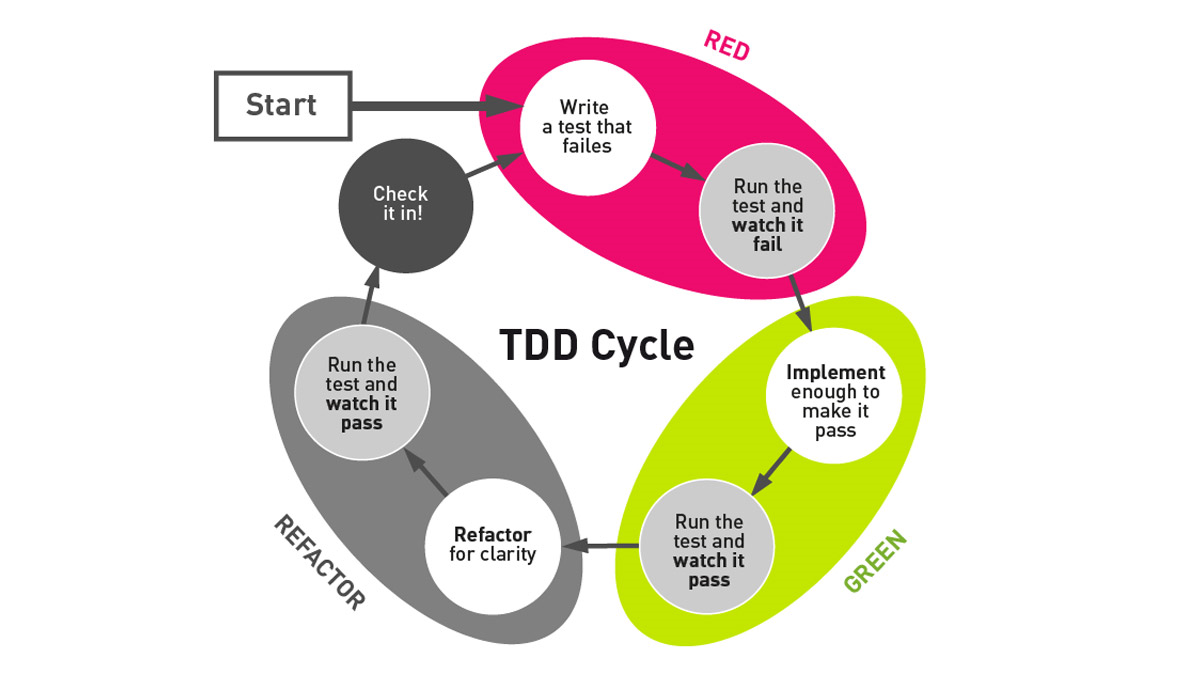Why use TDD?¶
The solution: write tests¶
Example Test¶
Test-Driven Development: Write tests before code¶
- first think of usage of code, then of implementation
- clearer code, less duplication
- less unused code
How does TDD work?¶

TDD for Data Science 1/2¶
Great article on TDD for data science: https://towardsdatascience.com/tdd-datascience-689c98492fcc
TDD is probably not worth the effort in the following scenarios:
- You are exploring a data source, especially if you do it to get an idea of the potential and pitfalls of said source.
- You are building a simple and straightforward proof of concept. Your goal is to evaluate whether further efforts are promising or not.
- You are working with a complete and manageable data source.
- You are (and you will be) the only person who is working on a project. This assumption is stronger than it might appear at first glance but holds for ad-hoc analyses.
TDD for Data Science 2/2¶
In contrast, TDD is great in these cases:
- Analytics pipeline
- Complicated proof of concept, i.e. different ways to solve a subproblem, clean data etc…
- Working with a subset of data, so you have to make sure that you capture problems when new issues come up without destroying working code.
- You are working in a team, yet you want to make sure that no one breaks the functioning code.
source: https://towardsdatascience.com/tdd-datascience-689c98492fcc
Unit tests, integration tests, ...¶
different "levels" of testing
- unit tests
- calling a function with different parameters and ensure that it returns expected values and/or tYour unit tests will call a function with different parameters and ensure that it returns the expected values
- In an object-oriented language a unit can range from a single method to an entire class.
- integration tests: They test the integration of your application with all the parts that live outside of your application. For example: making API calls, database connections.
- end-to-end tests: Testing your deployed application via its user interface is the most end-to-end way you could test your application.
source: https://martinfowler.com/articles/practical-test-pyramid.html
Hands-on¶
Contact¶
Alexandra Kapp
alexandra.k@correlaid.org
@lxndrkp
Frie Preu
frie.p@correlaid.org
@ameisen_strasse